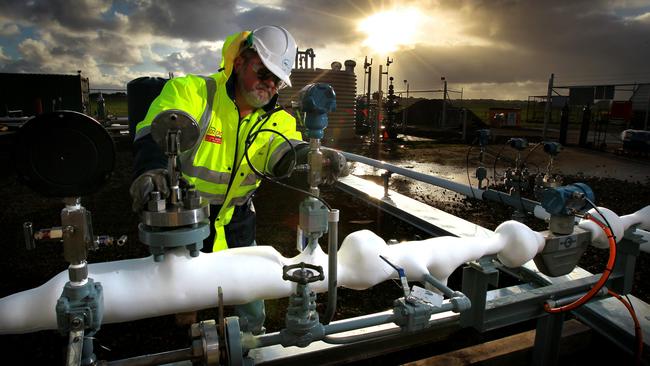Carbon capture and storage needed to move from aspiration to action on emissions reduction
To combat climate change we must use technology available to us now, such as removing CO2 from processing or industrial facilities, and burying it underground.

There is little doubt 2024 will be a significant year in the international discussion of combating climate change.
From the release of the Sixth Assessment Report of the UN Intergovernmental Panel on Climate Change in March to the COP28 meetings in Dubai, the past 12 months have seen a sharpening focus on real actions that will be required to reduce emissions.
COP28 ended with a final document acknowledging that despite “near-universal action by setting goals and sending signals,” the world is “not yet collectively on track” to achieving the goals of the Paris Agreement and its overarching aim to keep the global temperature increases within 1.5C of pre-industrial levels.
There is no doubt action must be taken to curb carbon emissions and limit their climate impact. And there is increasing awareness that meeting these challenges will require use of all tools available.
And to make a difference now, we must use tools that are available now.
The COP28 agreement flagged accelerating zero and low-emission technologies including carbon capture and storage, while “transitioning away from fossil fuels in energy systems”.
Carbon capture and storage (CCS) is a proven technology that involves removing CO2 from oil and gas processing facilities, power stations or industrial facilities, and burying it underground – typically in geological structures that have held gases for millions of years.
With the International Energy Agency highlighting that global 2050 climate goals are unattainable without CCS, and a slower-than-needed rollout of renewables in most major economies, the emphasis on delivering new CCS projects is increasing.
CCS will play an even greater role as time goes by and global dependency on fossil fuels will remain very strong, if not growing over the next decades. That means we must roll out CCS fast and at scale.
It is also true that a greater role for CCS is resisted by some players.
EU climate commissioner Wopke Hoekstra told media during COP28 that CCS was “a minor part of the solution space”.
And US climate envoy John Kerry said carbon capture had a role to play but “no scientist tells me we can capture it all”.
Of course, we don’t need to capture all CO2 to make a meaningful impact on emissions. Evidence is mounting that the world will put pragmatic action ahead of ideology and aspiration as we strive to achieve meaningful, rapid and permanent emissions reduction.
This is demonstrably true in the US where the Inflation Reduction Act 2022 has significantly increased subsidies for CO2 capture, alongside hydrogen and renewable energy projects. In Britain, Prime Minister Sunak has announced a big expansion of CCS as part of his “proportionate and pragmatic” approach to tackling climate change – and still achieving a net zero economy by 2050.
Australia clearly has a major role to play in demonstrating CCS can deliver at scale. With Chevron’s Gorgon project in Western Australia in operation, Santos’s Moomba CCS under construction and 17 other projects in various stages of feasibility studies, we have to demonstrate how fossil-fuel-dependent economies and hard-to-abate industries can decarbonise.
Delivering these projects should be assisted by important collaborative work undertaken this year by industry and the Australian Government to streamline regulation of new projects and hopefully accelerate permitting time frames.
At least four of the 17 projects mentioned above have high potential: the SEA CCS and CarbonNet projects off the coast of Victoria and the Bonaparte and Bayu-Undan projects off the Northern Territory coast.
If all were delivered by 2032, along with Gorgon and Moomba, between 31 and 35 million tonnes of CO2 a year could be stored – reducing Australia’s emissions by 8 per cent. Alongside renewables and increasing investment in hydrogen and batteries, CCS can make Australia a world leader in decarbonisation technologies and innovation.
CO2CRC will continue our drive to advance the technology, lead in innovation and development, and highlight its vital role in supporting an orderly transition to a low-emissions future.
Dr Matthias Raab is the CEO of CO2CRC, a world-leading research organisation, globally recognised for innovative carbon capture, utilisation and storage solutions.



To join the conversation, please log in. Don't have an account? Register
Join the conversation, you are commenting as Logout